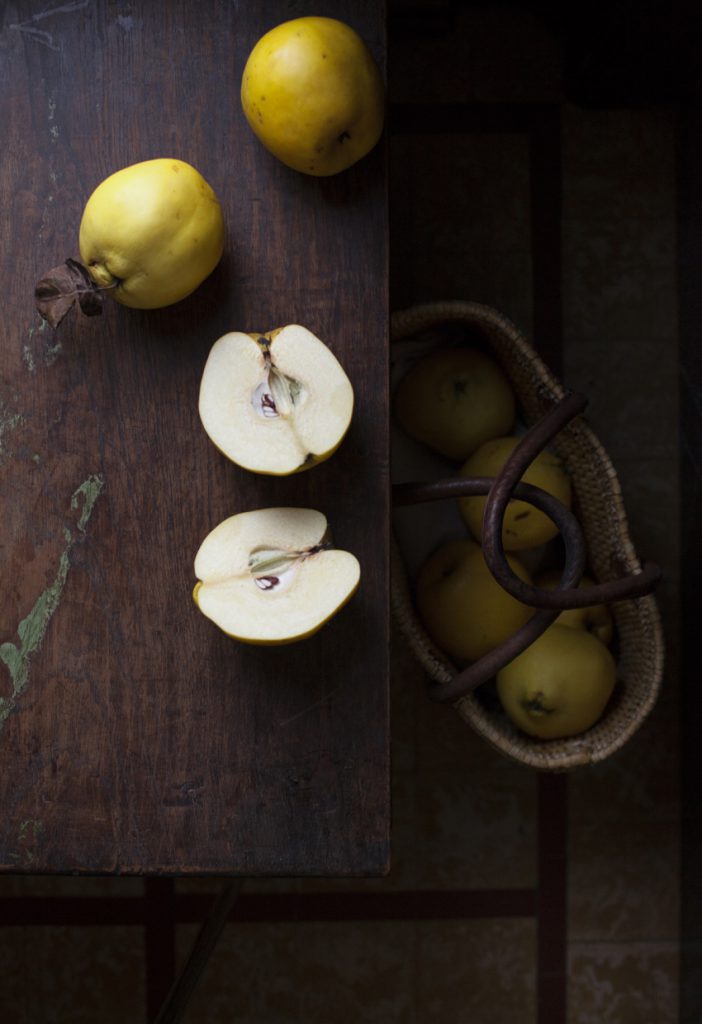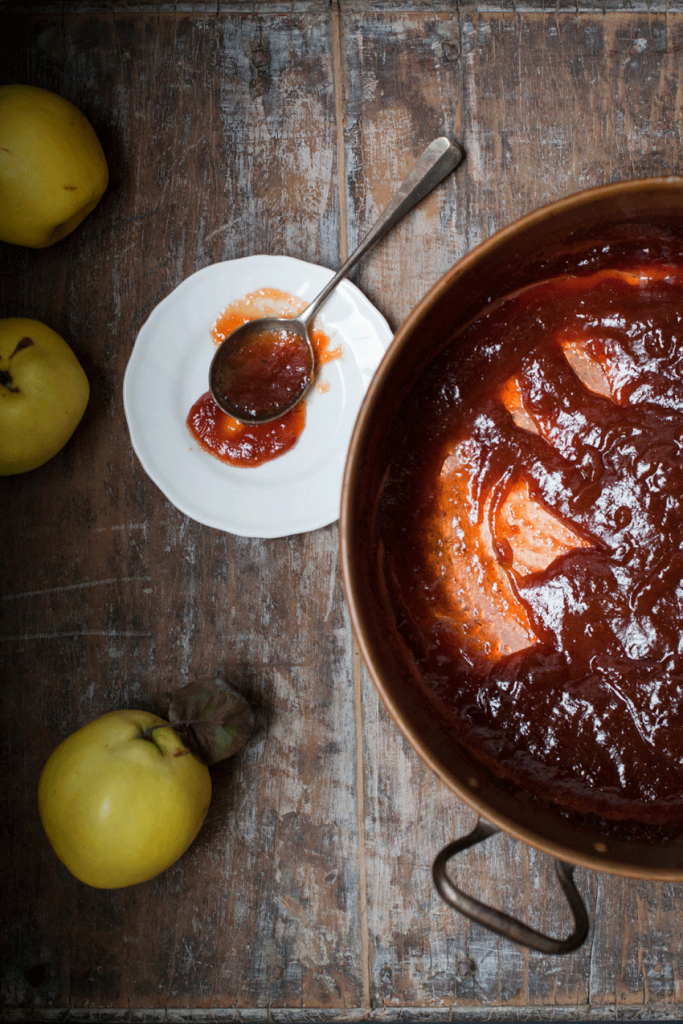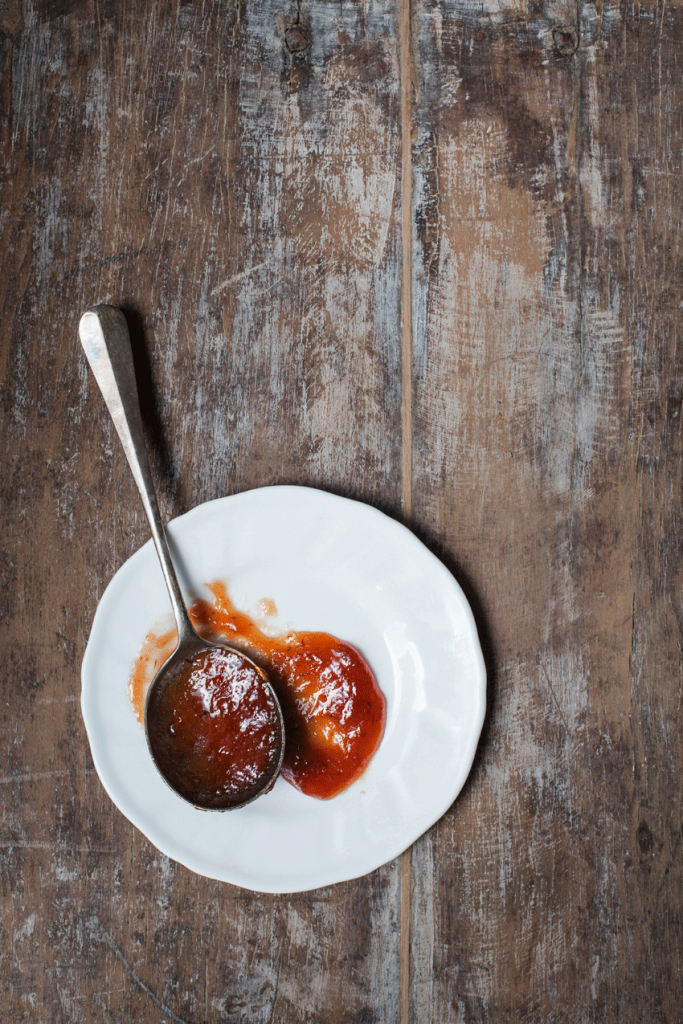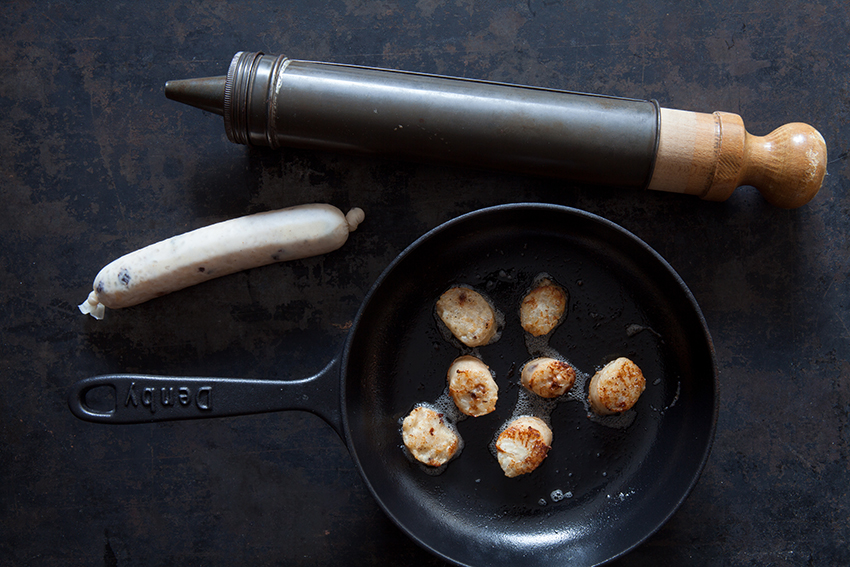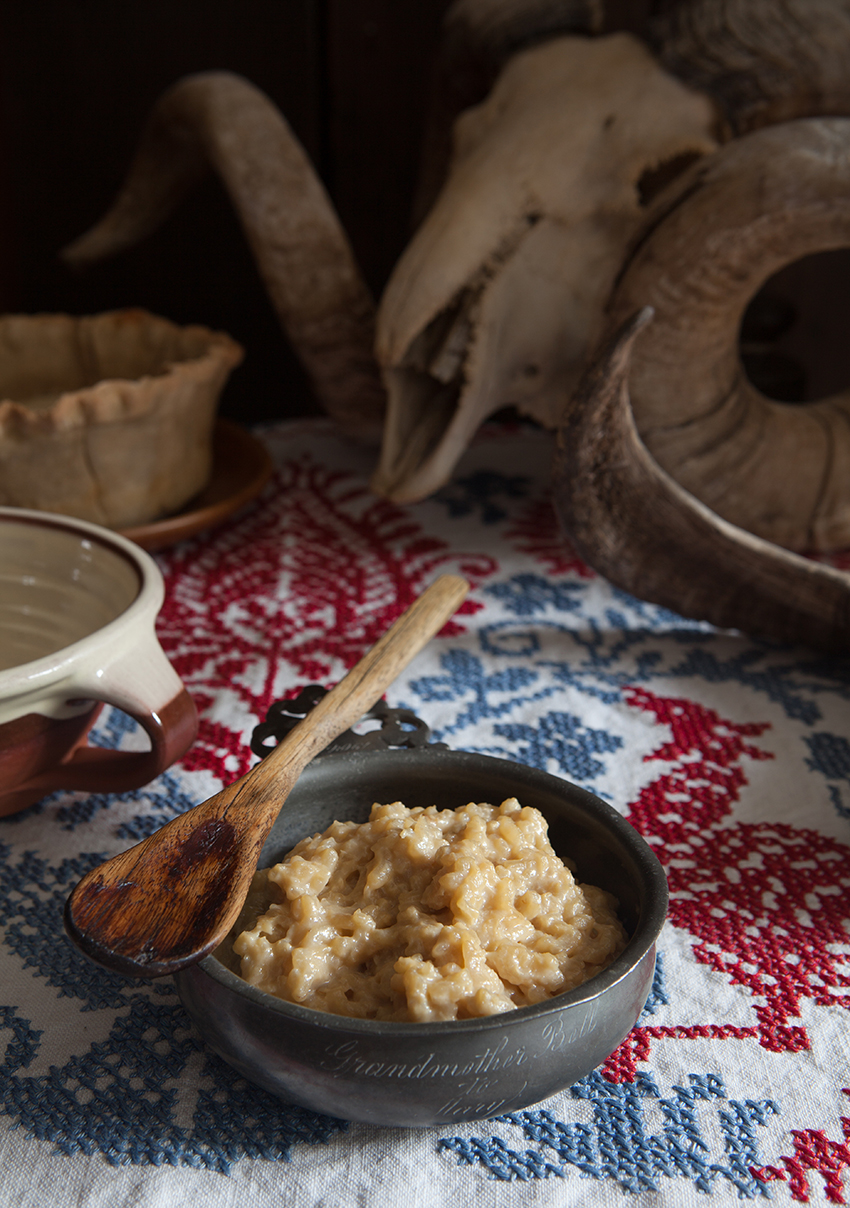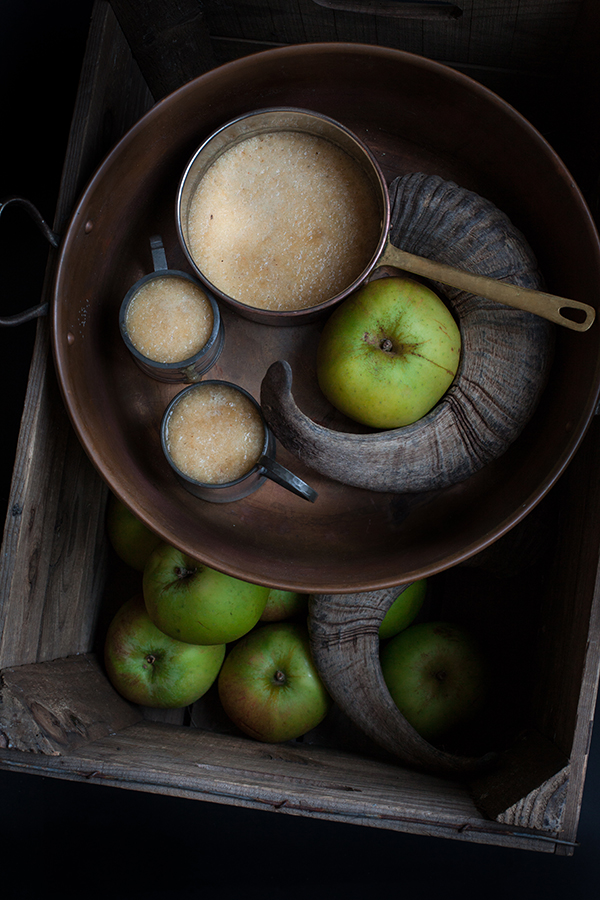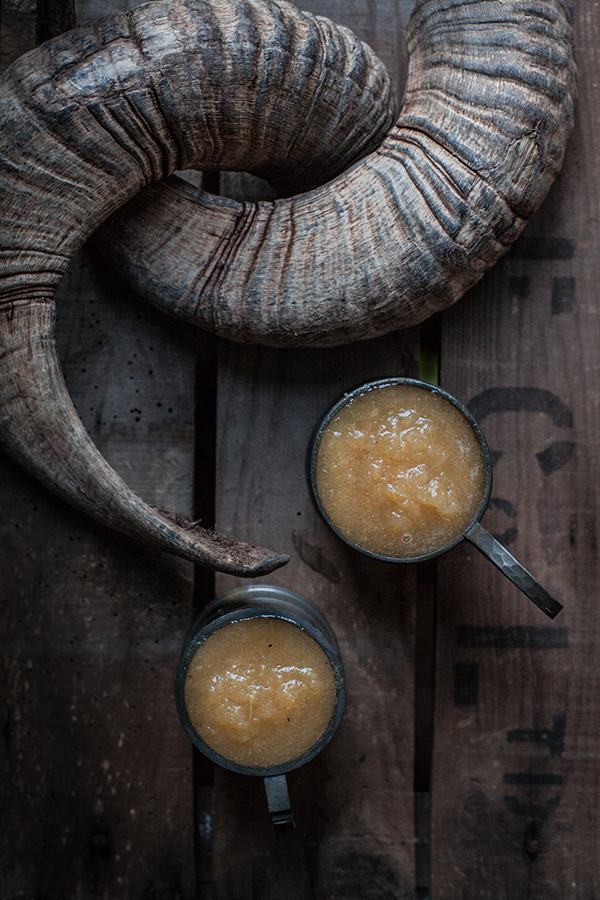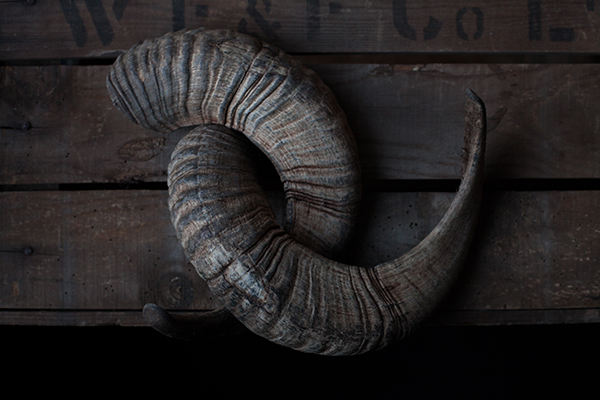The post How to make Quince Cheese appeared first on Miss Foodwise.
]]>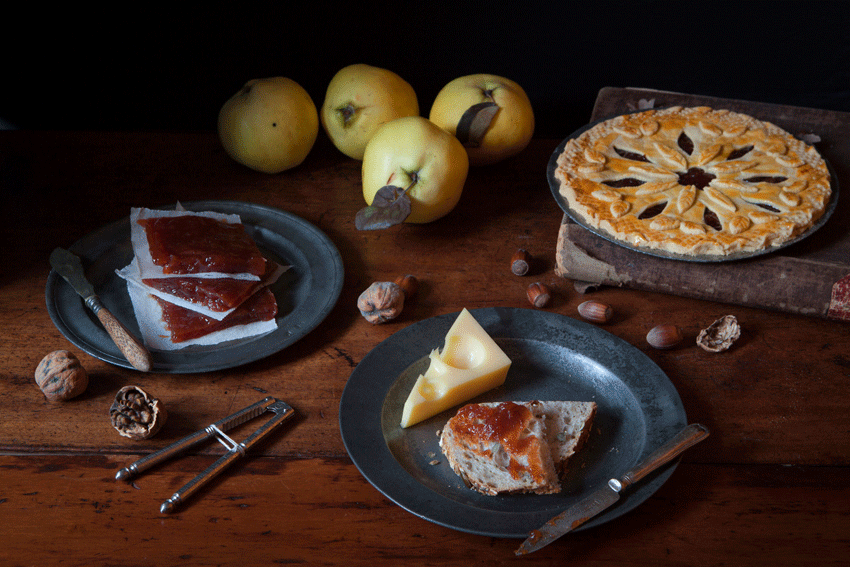 I’m not the biggest fan of sweet desserts after mains, I prefer an afternoon tea where the treats become the star of the show. That way you can enjoy them to the full and they do not become that thing you eat last when you’re actually too full to enjoy it. For an afternoon tea you can dress up, wear a hat, and pretend to be a lady of good breeding. Drinking tea with your pinky in the air, back straight, having polite conversations and enjoying the experience of eating from fine bone china. I’m also a sucker for a multi-tiered cake stand, and for clotted cream – lots of it.
I’m not the biggest fan of sweet desserts after mains, I prefer an afternoon tea where the treats become the star of the show. That way you can enjoy them to the full and they do not become that thing you eat last when you’re actually too full to enjoy it. For an afternoon tea you can dress up, wear a hat, and pretend to be a lady of good breeding. Drinking tea with your pinky in the air, back straight, having polite conversations and enjoying the experience of eating from fine bone china. I’m also a sucker for a multi-tiered cake stand, and for clotted cream – lots of it.Cheese and biscuits are my choice of afters and with a decent fruit cheese and port this quickly becomes my perfect kind of dessert.
Fruit cheeses are reduced jams or pastes. Centuries ago they were served after dinner as a digestive and they were often prescribed by apothecaries to cure minor ailments. The fruit paste was often pressed in a mould with fancy engravings and could look rather stunning. Moulds of this sort are rare to come by, I only know one person who has a mould and I believe he even carved it himself.
Although fruit cheeses should be thick and hold their shape, they should still be spreadable. You can make them into small cake trays for a nice shape or just in a large tray, you can then cut squares of the fruit cheese to wrap them and keep them. They are the most delectable accompaniment to blue cheese, but they can also be eaten all on their own, as a sweetie. A nice idea if you want to know what your child puts in its mouth, factory made sweets can contain all sorts of horrible additives. But it’s still sugar, make no mistake, to call it healthy would be wrong, but eaten and treated as a treat it is just fine.
My favourite fruit cheese is made of Quince. Quince are usually cooked and conserved. They look like otherworldly lanterns, large yellow pears with a strange downy covering. Raw they are considered quite unpalatable because of their tartness, but they are high in pectin which makes them ideal for making jams, jellies and fruit cheese. The pectin is most strong in the pips of the fruit, often ground up pips would be used to set other jelly like creations. But this is something I would not recommend you do as the seeds contain nitriles which turns poisonous when it comes in contact with your guts enzymes and acid. A few pips from your batch of quince are fine, just don’t chuck in a jar of ground up pips.
Quince and quince cheese was popular all over Europe since Medieval times. In Spain they call it ‘Membrillo’, in Italy ‘cotognata’ from the Italian word for quince ‘mele cotogne’ quince apple, the French call it ‘cotignac’ or ‘paté de coing’ from the French ‘coing’ for quince. Quinces are responsible for the word marmalade as their Portuguese word is ‘marmelo’ and they were made into fruit cheeses named marmalades.
Not only quince are used, every type of plum works great too. The Spanish love it with Manchego cheese, others prefer it with sweet cheese curds, but I prefer a good blue cheese like Stilton – the king of blue cheese, Shropshire Blue or Devon Blue.
Recipes for fruit cheeses are plentiful in historical cookery books. It was common to add red sandalwood or cochineal (a red colouring made from the cochineal beatle) to food to enhance the colour. Cochineal, also known as Carmine, was particularly popular in the Georgian and Victorian era but also in Tudor times the colouring of food was a very common practice in the kitchens of the King.
Cochineal wasn’t only used to colour food, it was also used as a textile dye and more recent to give make-up like red lipstick its beautiful red and pink colour. (Since I’ve been wearing red lipstick for half my life I’ve probably eaten quite a few of these little cochineal bugs). I have a small batch of the dried beetles sitting in a jar in my kitchen now, ready for making cochineal. I own a small Victorian Cochineal bottle and it is quite amazing to see the dye has not lost colour all these years. That must be the reason cochineal is considered the best red dye. In Italy the cochineal bugs are used to dye Alchermes, a liqueur popular in Tuscany and other regions. That liqueur is then used to dye food too, cake or lady fingers are often soaked in it. The Italian version of a Trifle, the ‘Zuppa Inglese’ is made with sponge cakes or lady fingers soaked in Alchermes.
See below a period recipe from Mr. Borella, who was the head confectioner to the Spanish Ambassador in England around 1772. He also uses Cochineal to colour his quince cheese.
To make the paste of a fine red, bake the quinces in the oven a long while, then peel and sift them in a strong hair-sieve; dry the marmalade over a slow fire a little while, to about half the consistency of a paste then to redden it the more, keep it a good while on a slow ashes-fire, stirring some time; and to add to this redness, put a little steeped cochineal, and reduce it on a flow fire, to a thick paste; that is, when it loosens from the Pan; put as much sugar as marmalade, or paste, soak it a little while on the fire and let it cool, just enough to work it well with the hands, and finish directly as usual.
Mr. Borella, The Court and Country Confectioner, 1770
The recipe below can be used two ways. You either jar the jam before it goes into the oven to dry and use it as a filling for pies (see the next posting), or you place it into the oven so it becomes fruit cheese.
The trick to get a beautiful dark colour is to cook the quince and the jam slowly and for a long time. The peel I’m told is also adding to the reddish colour so I never peel the fruit.
Quince cheese
What do you need
- 3 large quinces, 600 g, roughly chopped (you can remove the core but I do not for the extra pectin the pips contain, just take off the black crowns)
- 1 cinnamon stick
- 2 cloves
- peel of 1 lemon
- raw cane sugar, equal amount to the pulp
Method
In a large saucepan cover the quinces with water and boil until tender with the spices. Remove the quinces from the saucepan and save the spices.
Blend to a puree with cores and all to get a good set using a stick blender. Measure the quince puree and add the same weight in sugar plus the spices you saved. Proceed as for making jam, being careful as quince jam tends to spit. A way around this is to not make the jam on a hob but first bring it to a boil and stir for 5 minutes, remove the spices, then transfer the pan covered in greaseproof paper into the oven at 160°C. Leave there for 45 minutes, then check on it, it should be thick and perfect for a pie filling.
Let the puree cool so it is cold enough to handle and strain through a sieve, pushing it through with a rubber spatula. Use for pies or jam or proceed to dry the make the fruit cheese by preheating your oven to 130°C if you haven’t already.
Transfer the jam to a shallow tray which you previously lined with greaseproof paper. You can make it as thick if you want but 1 cm is definitely the minimum. Let the paste dry until you feel it is becoming firm. There is no saying how long this will take exactly but it will be around an hour at least for sure.
When ready, leave to cool and then wrap in clean greaseproof paper. Place in an airtight container and it will keep for a few months. It might cristalise a little, but that doesn’t make it bad to eat.
You want it super red?
You might have a hard time finding the cochineal beetles but you can use all natural red beetroot powder!
This is nice as an edible gift to someone special!
You might also like
Damson cheese >
Quince Rataffia >
Quince tart Coming next week!
And check out Jul’s Kitchen roast quince with rice pudding here >
The post How to make Quince Cheese appeared first on Miss Foodwise.
]]>The post The Rise of Rice Pudding – a History and a 14th century recipe appeared first on Miss Foodwise.
]]>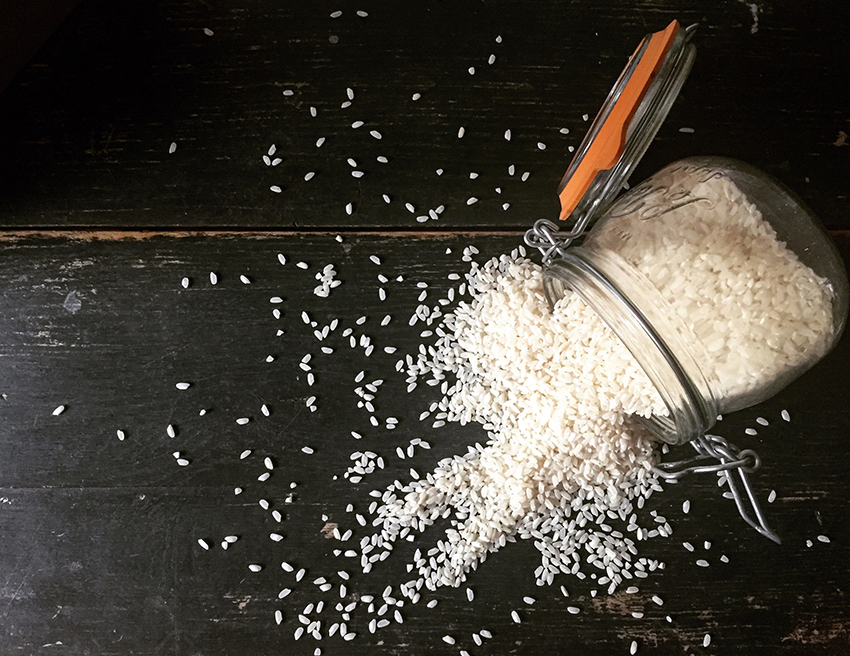
Yesterday, 11 april, I was asked to come on the BBC One Breakfast television program to talk about the history of rice pudding in light of the sudden craze for rice pudding – and that I have just written Pride and Pudding, a whole book about pudding. So how has rice pudding got itself back on our menu’s and in our hearts?
Rice pudding now as its own restaurant in Manhattan, New York dedicated to rice pudding – called ‘Rice to Riches’. The BBC journalist contacting me told me that Waitrose executive chef, Jonathan Moore, said that after visiting Manhattan’s rice pudding-only shop recently, Jason Atherton’s Michelan star restaurant, Pollen Street Social, and Berner’s Tavern in London have both re-invented the classic dessert. He also said sweet, savoury and embellished versions are becoming more ‘extreme’, with options at The Rice Cream Shoppe in Greenwich Village including gluten free and vegan versions. Waitrose also reported that sales of rice pudding have risen by 8% year on year.
I’m sure that in this modern day and age with dishes that look like works of art, we are all craving for something real and honest. Something which just isn’t pretending to be more than it is. Something so humble it conjures up memories of your nan, your mum or the auntie who made it especially when you were visiting. I have faint memories of my mum making rice pudding and I can remember the impatience for it to cool off and develop that glorious yellow skin which was really, the best part of the pud.
Rice pudding is also easy to make, and not at all very unhealthy if you don’t drop in half a ton of sugar. Jackie Kearney – Masterchef finalist – was also on the show with me and she brought in some puddings for us to try. A delicious vegan one (check out her book Vegan Street Food btw) with spices which I wanted to finish there and then – only I was on live TV so had to politely give it back!! Then one with passion fruit and a traditional baked one with a big skin which just made Jon Kay, the presenter cringe. He does not like a skin on a pudding, he does not know what is good I say!
But has rice pudding always been a humble dish, a pudding for all, a dish so plain we nearly forgot about it?
Rice pudding started its life in the kitchens of Kings and Queens. Rice was an expensive import so it would have been only for the elite. The first ones were pottages, which you can more link to a side dish or something more like a risotto than a dessert pudding (see what I did there, ‘dessert pudding’, cos not all puddings are sweet!!!) like we know it today. The Forme of Cury (1390) – the earliest surviving collection of recipes in England – gives a recipe for a rice pottage, and one for Ryse of Flesh. The Rice of Flesh is savoury and made with broth, almond milk and saffron, while the rice pottage is what would become the modern-day rice pudding and the recipe just omits the salt and broth, using water instead to cook the rice the first time.
Sugar isn’t added in The Forme of Cury; for a sweetened rice pudding we have to wait until the 15th-century Austin manuscripts, which include a pudding sweetened with honey and sugar. John Murell (A Newe Booke of Cookery) in 1615 adds eggs, suet, currants, cinnamon, sugar and barberries and stuffs the rice pudding into sausage skins, like a white pudding. In 1660, Robert May (The Accomplisht Cook) adds eggs, beef suet, salt, nutmeg, cloves, mace, currants, dates and powdered coriander seeds.
Unlike a modern rice pudding, these recipes uses suet as in most boiled puddings. As we can use arborio or pudding rice today, we don’t need to steep the rice overnight. I find arborio rice has a better result if you’re going to stuff the pudding into sausage skins. If you are making this as a regular rice pudding without using sausage skins, you may use pudding rice, and use a knob of butter instead of the suet. When made in sausage skins the puddings were usually roasted or fried before serving which really is very good. Also, I think it’s a laugh to serve people their dessert pudding in a sausage shape.
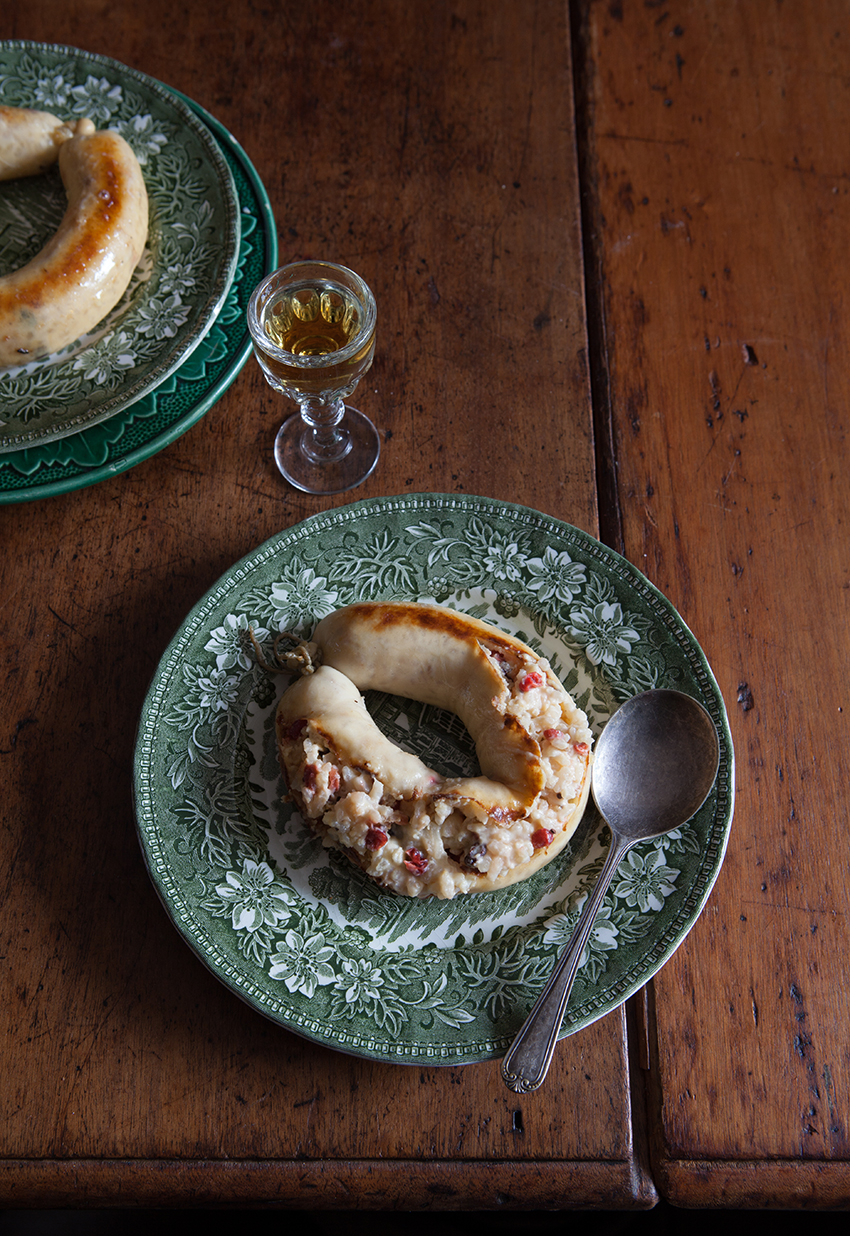
John Murell’s 17th century rice pudding in skins with barberries, recipe can be found in my book Pride and Pudding
It’s only when in the beginning of the 18th century, import of rice becomes more common, that rice pudding becomes something which is more every day rather than posh. By 1747 Hannah Glasse has several recipes for it in her book – mostly ‘borrowed’ from other cookery writers of that time. And in the 19th century Mrs Beeton tells us it is economical, good for the nursery and Eliza Acton tells us it is cheap.
In the 20th century it is so cheap and easy that it becomes a staple in schools and hospitals, and we start to really think rice pudding is awfully plain. Dorothy Hartley writes in Food in England (1954) that “East End women make a rice pudding using broth … when cooked it is finished under the joint of Mutton.” This is very similar to the “Ryse of Flesh” recipe found in The Forme of Cury (1390).
Today we want to go back to those easy straightforward dishes. As a hankering for the past, your childhood, and the safe and warm feeling that (hopefully) comes with it. We can add so many things to rice pudding, you can jazz it up with spices, add fruit and nuts, but it will always stay a rice pudding. Think of it as an old friend, even with a new coat and tie, it will always be that same old friend you’re happy to see.
Now get medieval and cook up this Ryse Of Flesh from The forme of Cury
Take Ryse and waishe hem clene. And do hem in erthen pot with gode broth and lat hem seeþ wel. Afterward take Almaund mylke and do þer to. And colour it wiþ safroun an salt, an messe forth.
The Forme of Cury, ed. Samual Pegge, c.1390
Serves 4
- 120g short-grain rice, such as arborio
- 500ml beef broth
- 500ml almond milk
- A few saffron strands
Method
Put the rice and broth in a deep saucepan and heat gently. Stir well and bring to the boil. Simmer and stir often so the rice doesn’t stick to the bottom of the pan.
When the liquid is almost completely absorbed, after about 15 minutes, add the almond milk and saffron. Stir well, then simmer gently for 20-30 minutes, stirring every now and then until all the liquid is absorbed and the rice is cooked and thick. Spoon the cooked rice pudding into a serving dish.
Recipe from my book Pride and Pudding, published 7 april by Murdoch Books and available on Amazon and Waterstones and many more spots! (receive no income from you clicking the amazon link)
You might also enjoy -> me on the telly 
And maybe you would like this Medieval chicken recipe here >
The post The Rise of Rice Pudding – a History and a 14th century recipe appeared first on Miss Foodwise.
]]>The post We shall drink Lambswool on the Twelfth Night appeared first on Miss Foodwise.
]]>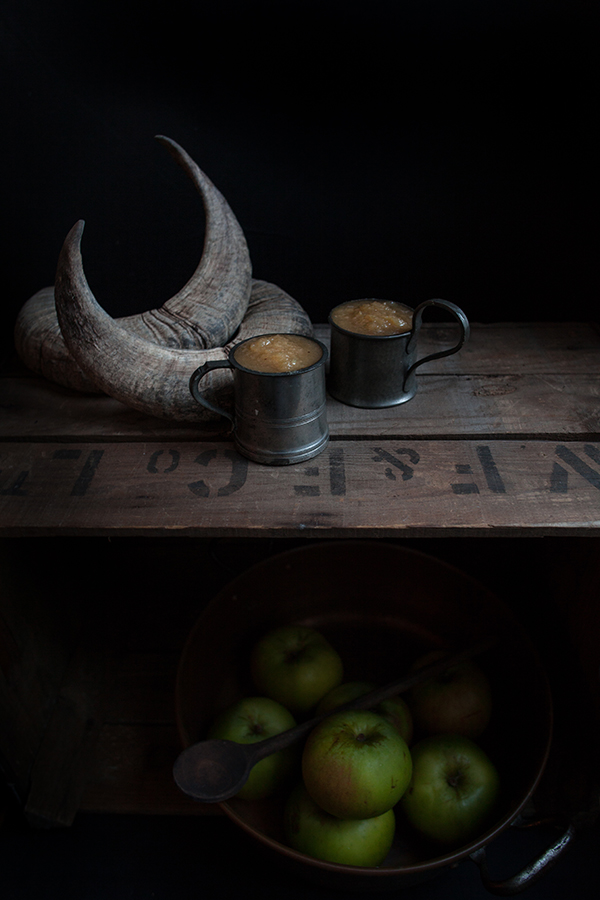
Although I was brought up with a lot of Pagan traditions, living in the city of Antwerp meant that some customs were harder to follow than others. As city dwellers far removed from any orchard or field, we were ignorant to the traditional rites surrounding harvest and sowing time. If there is no nature to honour, no field to gather around the cleansing fire, the feasting quickly becomes part of the past and forgotten.
Industrialisation has brought us wealth and the choice of matching shoes with handbags on a regular tuesday morning. It has brought the technical bits and bobs we all love and loathe. The big world has become smaller and the challenges bigger. The lucky few still live outside of the ever growing concrete cities. We follow their lives on Instagram with a sense of nostalgia, as if we have ever experienced living surrounded by trees and liberating fields and forests, and then tragically lost it.
But that is what it is, we have lost something, and most of us can feel it. There have never been more depressed people, nor have there ever been more people who are unhealthy because of their eating habits, eating too much rather than starving, but malnourished nonetheless. Our daily bread is soiled with adulteration, slowly making us ill. Animals are kept away from fields and live their ever shortening lives on the concrete floors of factory farms to keep the cost of your daily need low, fruit is left on the trees to rot because farmers can’t afford to harvest it, the price a farmer gets for his milk hasn’t gone up in 20 years (based on Belgian farms) so milk is being sprayed onto the soil of the farmland where the cows can no longer roam freely because of bureaucratic nonsense about fertilizer. Small scale generation long fishermen turn their boats into flower beds because the fishing quotas set out to protect fish stocks have made it so that only the big destructive factory fishing vessels can make a living, scooping up the fish only for part of it to be actually consumed and the rest turned into animal feed because their nets just catch too much for it all to be sold and cooked by us humans. The fisherman that could have made his day by catching one Dover Sole, now has to trow it back, while the big monsters take and take and kill the sustainable fishing industry.
We got lost as humans, because we lost part of our human nature.
Let today be an Epiphany.
The Epiphany is the Christian feast that concludes the twelve days of Christmas. In Pre-Christian pagan traditions this marks the time for Wassail. The practice of ‘wassailing’ meant singing and drinking in the apple orchards on the Twelfth Night to awaken the trees, to warn of the evil spirits and pray for a good harvest in the autumn. It could be that the feast of Wassail comes from the Celtic festival called ‘La Mas Ubhail’, the Feast of the Apple. Wassail comes from ‘waes hael’ meaning ‘be thou healthy’ or ‘be whole’, a salutation in Old English. During the feast these words would be addressed to each other and to the oldest apple tree in the orchard.
A drink traditional to Wassail is called ‘Lambswool’ and it is very possible that ‘La Mas Ubhail’ got phonetically Anglicised, to ‘Lamasool’ and later ‘Lambswool’. In historical books we often see that a lot of words were written down phonetically, resulting in a number of different ways to note down one single word.
Robert Herrick, a mid 17th century poet mentioned the custom of Wassailing and Lambswool in his poem about about Twelfth Night, we also get an idea of the recipe too:
Next crown the bowl full With gentle lamb’s wool Add sugar, nutmeg and ginger, With store of ale too; And thus ye must do To make a wassail a swinger
Give then to the king And queen wassailing : And though with ale ye be whet here, Yet part from hence As free from offence As when ye innocent met here.
The drink Lambswool is a mulled ale, poured over hot apple puree, although some people swear by whole apples, or apple pieces cooked in spiced cider or ale. However, as far as a drink goes, you can’t swallow a whole apple, nor can you swallow apple pieces so it is most probable that the recipe containing whole apples is just derived from the recipe made with apple puree. It is possible that the soft puree resembled a lambs fleece to people in the old days, resulting in giving it the name of what they associated it with, lambs wool.
Another reason for thinking that an apple puree was used it that this is the end of the season, so the apples which are left in times before refrigeration and fancy techniques to keep fruit from ripening, would not have been the prettiest of the bunch. An hot and spiced apple puree fortified with ale would be warming on a january evening, and would allow people to prepare it in a kettle rather than an oven which is used for the recipe with whole apples. Remember this is a country dish and ovens were a privilege for the well-to-do. But the sugar in the dish also tells us this wasn’t a drink for the poor, it could have been a special treat from the lord of the manor, or from the farmer to his farm labourers.
Last year I spoke to you about the intriguing Twelfth Cake, a fruit cake elaborately decorated with sugar or wax figurines which was also a privilege for the well-to-do. This cake, which is also mentioned by Herrick in his poem also started of as a humble ‘plum cake’ for the feast of Wassail. City folk picked up on it and adjusted the cake to their festive needs, making it the centrepiece of the table and causing queues in front of bakeries. Because it became popular in the city and with the wealthy, we get our first recipe for it in a 1803 book. A recipe for Lambswool is more difficult to find, as the drink remained in the countryside. So judging from the poem of Robert Herrick, I came up with this recipe for you.
Lambswool
serves 6-8
What do you need
- Bramley or Cox stewing apples, 500 gr (peeled and cored about 300 gr)
- water, 100 ml
- sugar 100 gr
- freshly grated nutmeg, 1 teaspoon
- ginger powder, 1 teaspoon
- a good ale, 750 ml
Method
Peel and cut your apples in small pieces and place in a pot along with 100 ml of water and the sugar and spices. Stew until soft and puree so there are no bits left.
When ready to serve, heat up the apple puree and add the ale while whisking. You should get a nice froth while doing so. Serve at ones.
Are you celebrating the Twelfth Night? Or are you having a slice of King cake, galette Du Roi or Driekoningen taart? Or are you wassailing and drinking Lambswool?
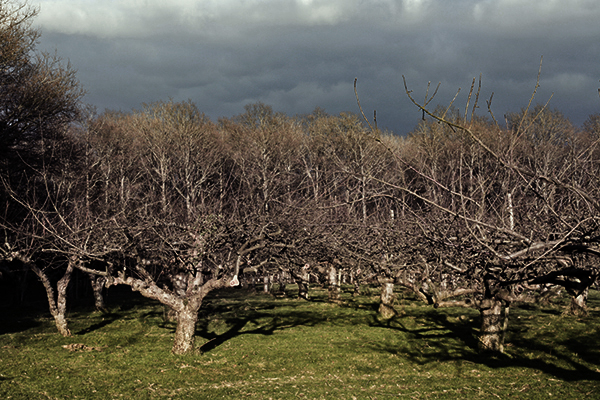 |
| Ancient apple trees in Sussex |
You might also like
Twelfth Cake for Twelfth Night >
The post We shall drink Lambswool on the Twelfth Night appeared first on Miss Foodwise.
]]>